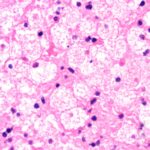
In a remarkable exploration into the subtle behaviors of the nematode Caenorhabditis elegans, researchers at the University of Michigan have unveiled a unique biological phenomenon: these simple roundworms possess the ability to detect and respond to the presence of dead individuals within their environment. This discovery not only broadens our understanding of inter-organism communication in one of biology’s most studied model organisms but also sheds light on the evolutionary significance of death perception and its profound influence on life history traits such as reproduction and longevity.
The impetus for this investigation arose from an intriguing observation that live C. elegans actively avoid areas populated by deceased members of their species. Despite lacking complex sensory organs like eyes, these worms demonstrated a clear preference to distance themselves from corpses within their Petri dish environment. This behavioral aversion suggested the existence of a chemical or molecular cue emitted from dead worms—an elusive “death signal” that these organisms can perceive and react to.
To probe this phenomenon, the research team meticulously designed experiments in which live worms were exposed either to intact worm corpses or to fluid extracts derived from lysed, dead worm cells placed strategically across feeding zones on assay plates. The outcome was striking: live C. elegans exhibited robust avoidance behaviors toward both whole corpses and cell-derived fluids. This demonstrated that soluble factors released upon cell death, rather than merely physical presence or visual cues, underpinned the worms’ recognition of death in their surroundings.
Delving deeper into the physiological implications of death perception, the researchers discovered that contact with these death-associated cues triggered significant biological consequences. Notably, exposed worms displayed a marked increase in reproductive rate over a short term, simultaneously experiencing a premature reduction in overall lifespan. This suggests that sensing death among conspecifics initiates a trade-off strategy where increased reproductive output is prioritized at the expense of longevity, reflecting an adaptive response to environmental threat signals.
Crucially, the team sought to identify the neuronal mechanisms orchestrating death detection in C. elegans. Through systematic evaluation of sensory neuron function, they pinpointed two olfactory neurons—AWB and ASH—as indispensable for mediating death perception. These neurons are known to process environmental chemical information, and their involvement elucidates how C. elegans biochemically ‘smells’ death, integrating external cues into behavioral and physiological adjustments.
At the molecular level, the scientists identified two intracellular metabolites, adenosine monophosphate (AMP) and histidine, as key death signals. These compounds are typically confined within healthy cells but are released extracellularly when cells die and rupture, serving as universal markers of cellular demise. The presence of AMP and histidine outside cells, therefore, acts as a powerful alert mechanism indicating that damage or organismal death has occurred nearby.
The discovery that AWB and ASH neurons detect these normally intracellular metabolites expands our understanding of chemosensation by linking internal cell integrity to community-level signaling. According to Matthias Truttmann, Ph.D., senior author of the study, these metabolites function as “danger-associated molecular patterns” that have been evolutionarily conserved as indicators of cell death. Their release and detection trigger behavioral avoidance and physiological shifts that could be critical for survival and species propagation.
This concept aligns with recent findings in mammalian systems where apoptotic cells release metabolites influencing the gene expression of neighboring tissues. Such cross-kingdom parallels suggest a common biochemical language marking death that spans from simple invertebrates to complex vertebrates. However, the downstream molecular pathways translating death perception into altered physiology remain to be fully characterized in C. elegans and other organisms.
The study’s implications extend beyond fundamental biology to potentially inform biomedical research on aging, stress responses, and population dynamics. Given C. elegans serves as a premier model for studying protein homeostasis and lifespan regulation, understanding how environmental cues like death signals affect these parameters could reveal novel targets for modulating aging and disease.
Moreover, this discovery prompts intriguing ecological questions about how death cues influence collective behavior and population fitness in natural worm communities. Do these signals help maintain colony health by promoting rapid reproduction following local mortality? Might they also contribute to pathogen defense by steering worms away from contaminated or hazardous sites? Unpacking these ecological roles will require further interdisciplinary research integrating behavior, neurobiology, and environmental science.
In conclusion, the identification of death perception mediated by AWB/ASH neurons responding to AMP and histidine positions C. elegans as a compelling model to unravel how organisms interpret and react to the ultimate biological event—death. This research highlights the fundamental importance of chemical signaling in modulating life strategies, illustrating a sophisticated neural and metabolic dance triggered by the demise of conspecifics. As the field advances, exploring the molecular crosstalk between death signals and longevity pathways promises to deepen our grasp of life’s delicate balance between survival and sacrifice.
Subject of Research: Behavioral and physiological responses to conspecific death signals in Caenorhabditis elegans
Article Title: Modulation of C. elegans behavior, fitness, and lifespan by AWB/ASH-dependent death perception
Web References: DOI: 10.1016/j.cub.2025.03.071
References: Truttmann M., Hernandez-Lima M., Seo B., Urban N.D., “Modulation of C. elegans behavior, fitness, and lifespan by AWB/ASH-dependent death perception,” Current Biology, DOI: 10.1016/j.cub.2025.03.071.
Image Credits: Justine Ross/Michigan Medicine
Keywords: Metabolism; Epidemiology; Bacterial pathogens; Invertebrates; Animal models; Ecology; Epigenetics
Tags: avoidance behavior in wormsC. elegans behavior studychemical cues in organismseffects of death on reproductionevolutionary significance of deathexperimental design in biologyimpact of dead organisms on living speciesinter-organism communicationlifespan and fertility researchmodel organisms in biologynematode death perceptionUniversity of Michigan research findings



